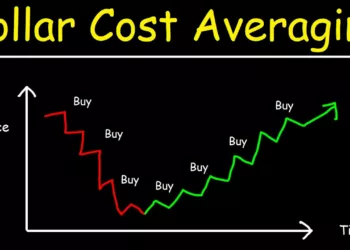Index funds have become an incredibly popular way for everyday investors to build wealth over time. But what exactly are they, and are they right for your portfolio? This comprehensive guide breaks down what index funds are, why they can be excellent long-term investments, and when they may not be appropriate for your investing strategy.
What Are Index Funds and How Do They Work?
An index fund is a specific type of mutual fund or exchange-traded fund (ETF) that aims to closely track the performance of a market index like the S&P 500 by holding the same stocks or bonds the index contains.
For example, an S&P 500 index fund would invest in all 500+ large US companies listed in the S&P 500 in approximately the same percentages as they are weighted in the actual index. As the underlying stocks in the index rise or fall in value, so does the index fund.
Rather than having a portfolio manager actively picking individual stocks trying to “beat the market”—an extremely difficult task—index funds take a passive, hands-off approach. This simplicity allows expenses to stay very low since less oversight and analysis is required compared to actively-managed funds.
And decades of data shows that low-cost index funds perform better over 5, 10, 15+ year timeframes than the majority of active mutual funds run by professional stock-picking managers aiming to outperform the market.
“A low-cost index fund is the most sensible equity investment for the great majority of investors.” – Burton Malkiel, Professor of Economics at Princeton University
Key Benefits of Index Fund Investing
What makes index funds powerful long-term wealth building blocks for most portfolios? Their combination of diversification, low costs, and long-term growth potential.
Immediate Diversification Across Hundreds of Stocks
Owning an S&P 500 index fund means you immediately own stock in 500+ of the largest US companies with just a single purchase. Compare this to buying just a handful of individual stocks and hoping you pick winners—a far riskier approach.
This diversification into hundreds of stocks across all market sectors insulates you from the business struggles or failures of one or two companies. Enron shareholders were completely wiped out when the energy company infamously collapsed under fraud allegations in the early 2000s. But index fund investors with exposure to Enron as part of the S&P 500 barely felt a blip during its demise.
The Power of Ultra-Low Costs
Actively managed stock-picking funds require extensive analysis and oversight by portfolio managers and research teams trying to beat the market. This drives up annual fund expense ratios to 0.50% or more in many cases.
On the other hand, passively tracking an index like the S&P 500 year after year requires little management or trading. This allows rock-bottom expense ratios frequently under 0.10% for index funds and ETFs.
- For a $100,000 investment growing at a 7% annual return:
- 0.50% fees reduce your balance by over $430,000 over 30 years
- 0.03% fees reduce your balance by just over $130,000 over 30 years
As the above scenario shows, these small differences in annual fees compound into over $300,000 extra in your portfolio over decades thanks to the power of index funds’ ultra-low costs.
Strong Long-Term Returns
While stock markets gyrate up and down year-to-year, they show an undeniable upward trajectory over longer periods. $10,000 invested in an S&P 500 index fund in 1980 would have grown to over $850,000 by 2022 – turning a small initial investment into nearly $1 million over time.
Yes, rough periods like the Dot Com bubble and Great Recession led to gut-wrenching short-term losses. But index funds allow patient investors to harness stocks’ long-term growth potential despite volatility along the way.
When Index Funds May NOT Be Right For You
Understanding index funds’ limitations is just as important as appreciating their strengths when deciding if they should comprise the core your portfolio. They may NOT be appropriate if:
1. You Have Short-Term Goals
Like individual stocks, index funds can experience stomach-churning swings over months or a few years. The S&P 500 lost over half its value during the 2007-2009 bear market. It’s risky to invest money you may need in the near future in case a downturn aligns with a big expense looming.
2. You Require Investment Income
Some investors rely on investment income from dividends rather than selling off shares for income. Index funds focus on capturing overall market growth, so they include lower and non-dividend paying stocks along with cash-generating dividend payers. Those seeking more income may want a portfolio more heavily weighted towards individual dividend stocks.
3. You Have a High Risk Tolerance
While most equity funds struggle to consistently beat their benchmark index, some active stock-picking fund managers do outperform over time. If you have an aggressive risk appetite and the willingness to research managers’ strategies and track records, you may want to complement your core index fund holdings with some tactically chosen, actively managed funds expected to outperform.
Just beware of high fees and the reality that most actively managed funds underperform long-term once expenses are factored in.
Start Investing in Index Funds Today
I hope this breakdown has helped explain why index funds have become so popular for investors looking grow their wealth over time without needing to constantly analyze stocks or pay for expensive active management.
Subscribing to Benzinga Pro grants you access to breaking news, investor analytics, real-time data, stock research reports from Wall Street experts, and more – all in one platform – to drive profitable decisions.
And for more guidance on building diversified, low-cost portfolios tailored to your risk tolerance and goals, see our in-depth guide: Building Wealth Through Smart Investing.
















































